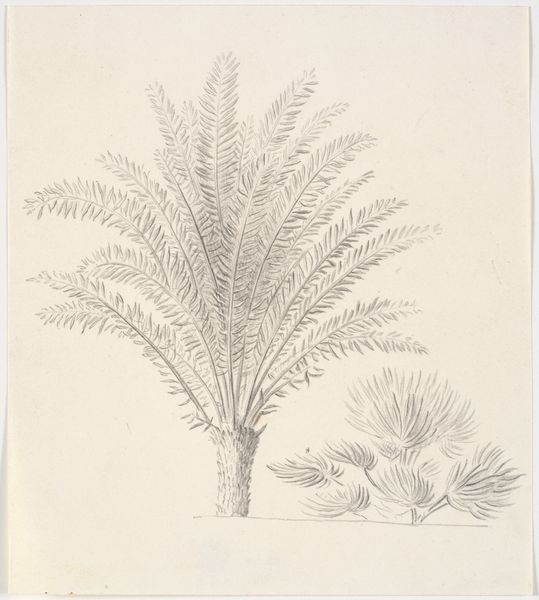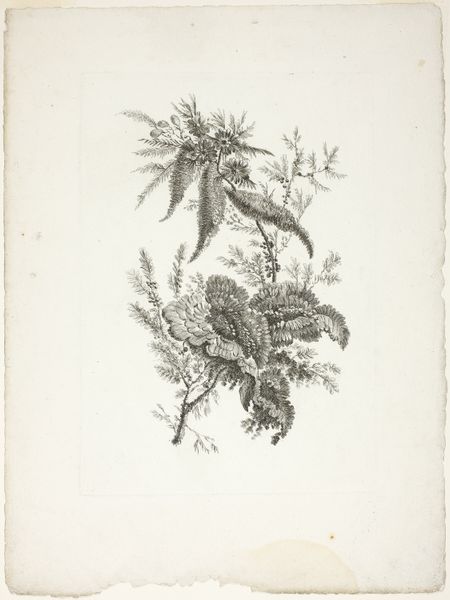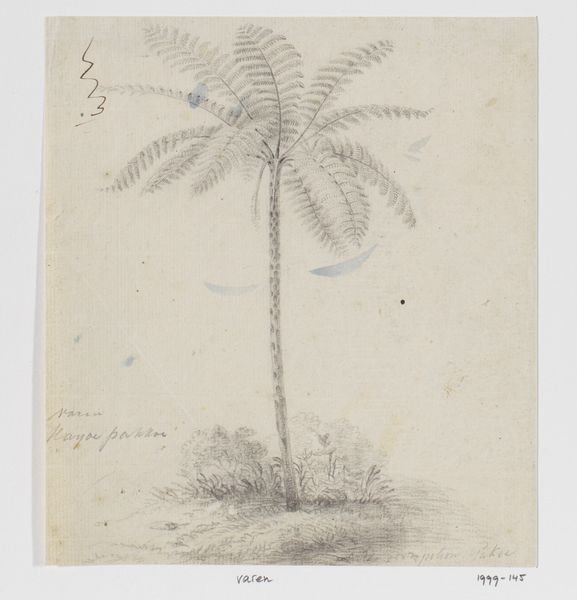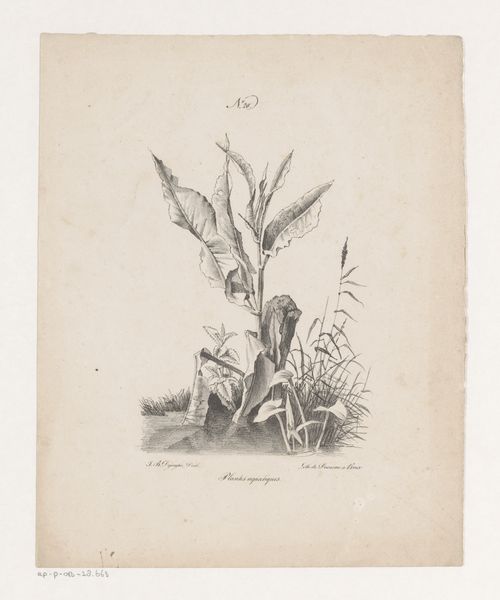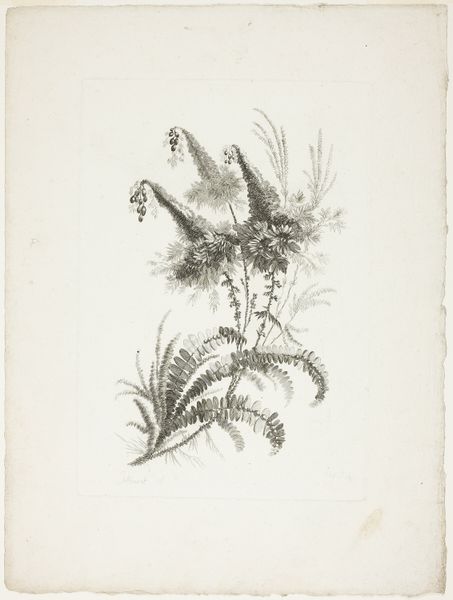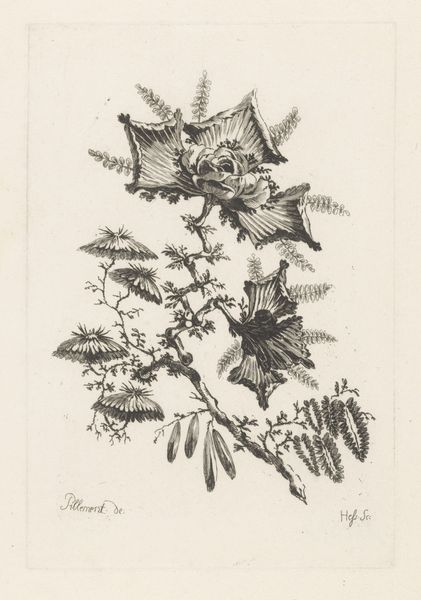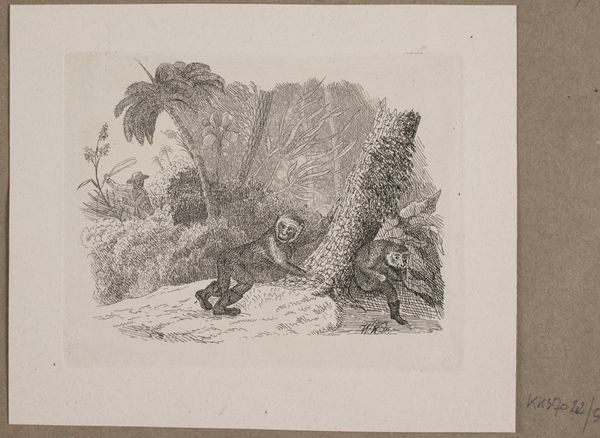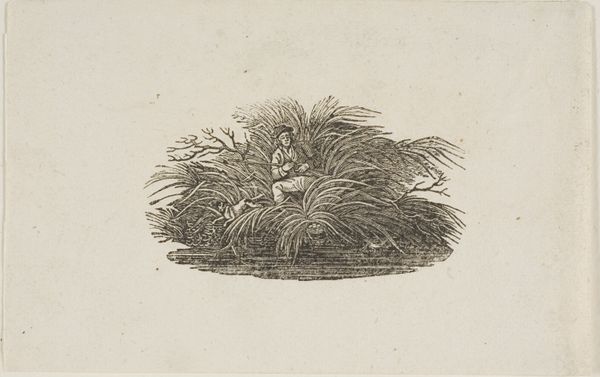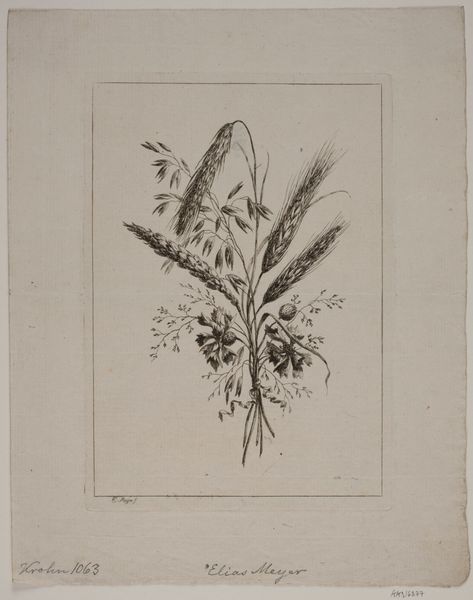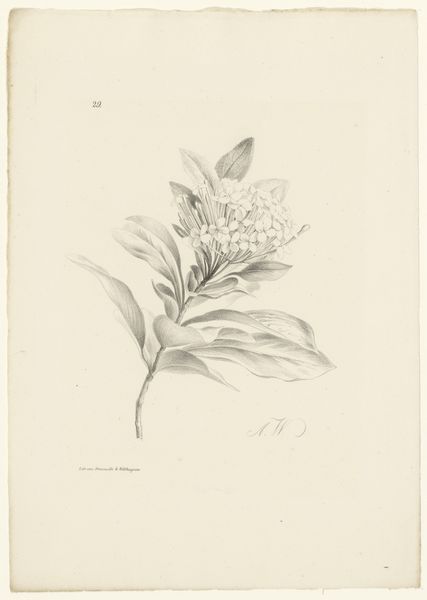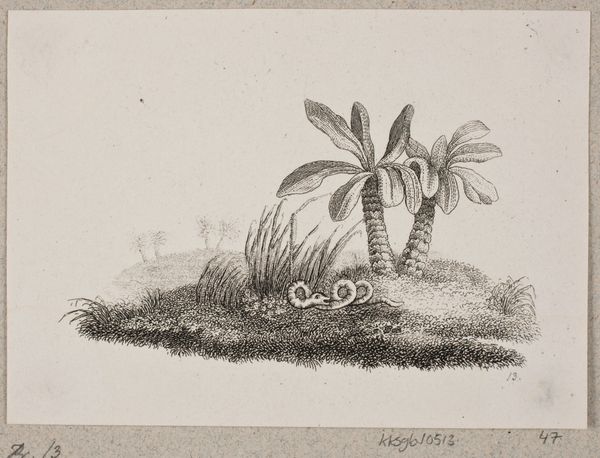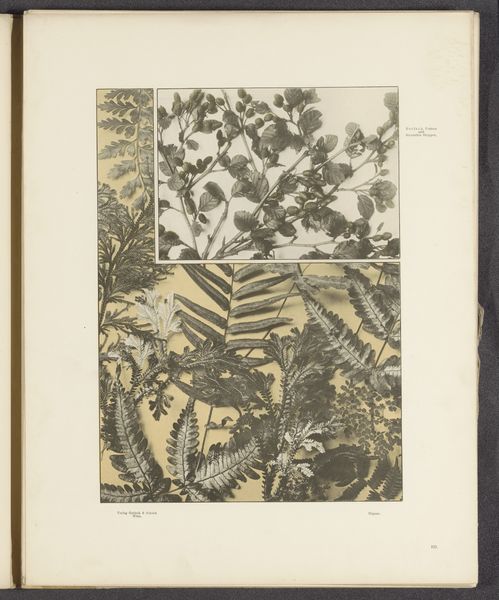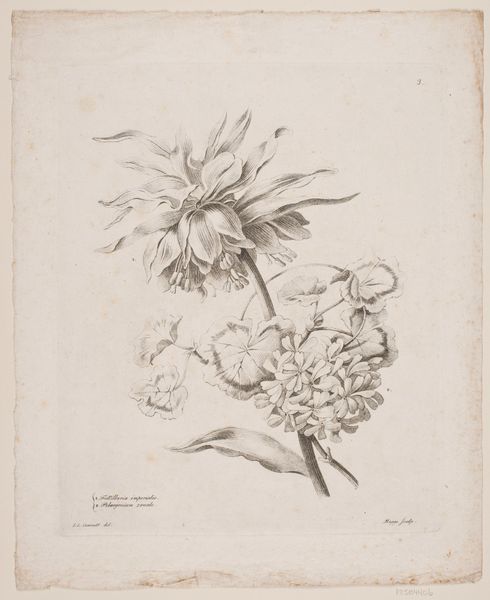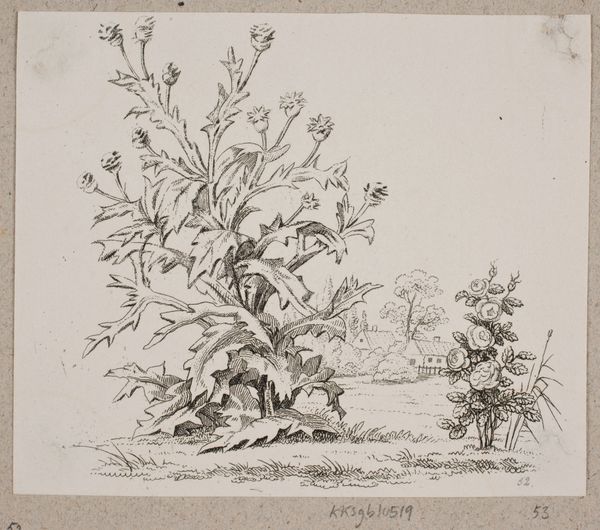
Vignet med bregne og græs overtrukket med spindelvæv 1820 - 1887
0:00
0:00
drawing, print, etching, ink, woodcut
#
drawing
# print
#
etching
#
pencil sketch
#
landscape
#
etching
#
ink
#
pen-ink sketch
#
woodcut
#
sketchbook art
#
nature
#
realism
Dimensions: 116 mm (height) x 120 mm (width) (bladmaal)
Curator: This small etching by Johan Frederik Rosenstand, dating from between 1820 and 1887, offers a glimpse into a miniature world of ferns and grasses. Editor: My first thought is how incredibly delicate it seems. The light and shadow create a lovely sense of depth, almost like a photographic study. Curator: It’s interesting you mention photography. Rosenstand was working in a period grappling with the rise of photography and its challenge to traditional art forms. An etching like this highlights the handcrafted nature of image-making, focusing on the artist's skill. Editor: Precisely. And look at the spiderweb draped across the foliage! It shows an almost scientific level of observation. But also, given Rosenstand's social milieu, isn’t this fascination with detail, with the "insignificant," a reflection of broader cultural values? How was nature perceived and consumed by the middle class, for instance? Curator: I agree; that precision is remarkable. The labor involved in creating such detail using etching—the careful application of acid, the repetitive process— speaks to the value placed on craftsmanship. But let's also look at the composition. The cluster of foliage is centrally positioned. Editor: Formally, this is balanced by the insects hovering on either side of the plants and gives it movement, doesn’t it? It invites the eye to wander, doesn’t it? Beyond realism, the symmetry almost transforms this simple depiction into something more stylised and harmonious. Curator: I see your point about the balance. The materials, the etching inks, and the paper themselves would have been part of a specific commercial network. Considering its production, who was this art intended for? How did it circulate, and how accessible would this type of art have been to the average person? Editor: Those are crucial considerations. And for me, pondering the interplay of technique and material leads to more formalistic reflections. Rosenstand's arrangement offers insight into structure, form, and balance, don’t you think? Curator: I find that looking at this artwork, paying attention to these factors—the materials used and the conditions in which the artist created it opens doors for many interpretations. Editor: For me, this careful attention and study encourages close contemplation and gives a great reward with layers and textures of a tiny and magical world.
Comments
No comments
Be the first to comment and join the conversation on the ultimate creative platform.
